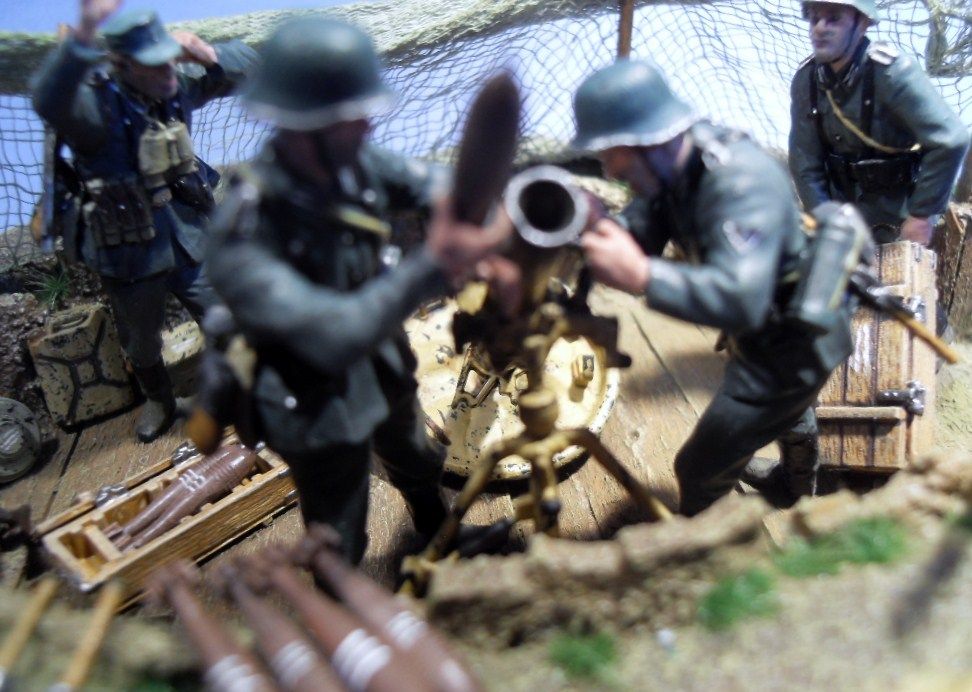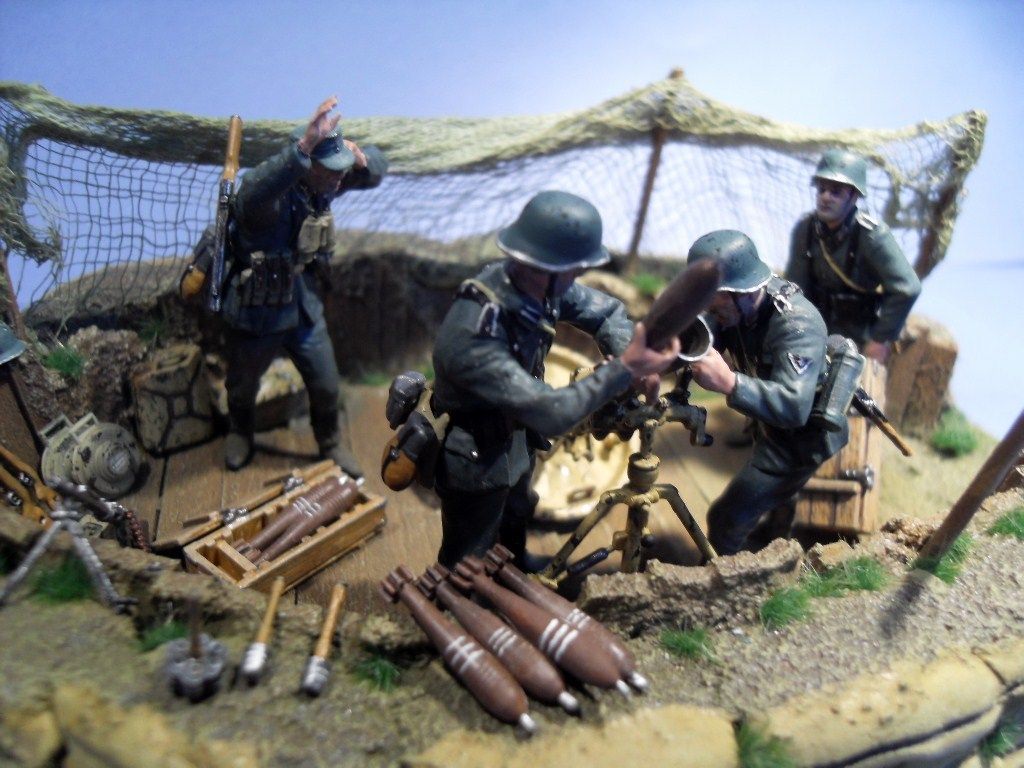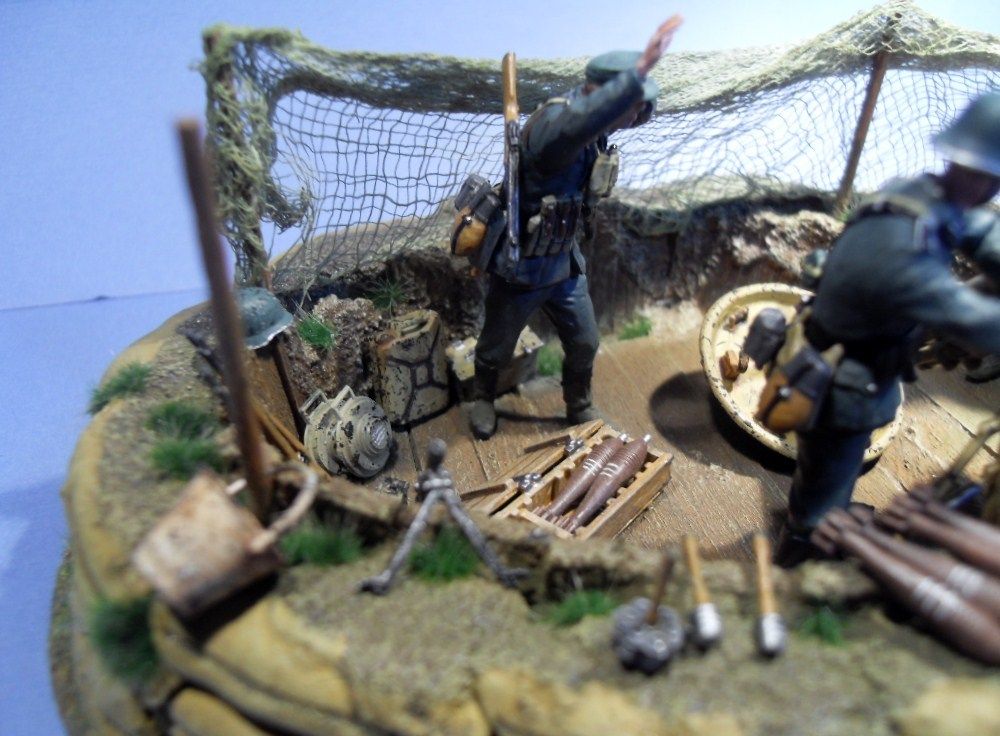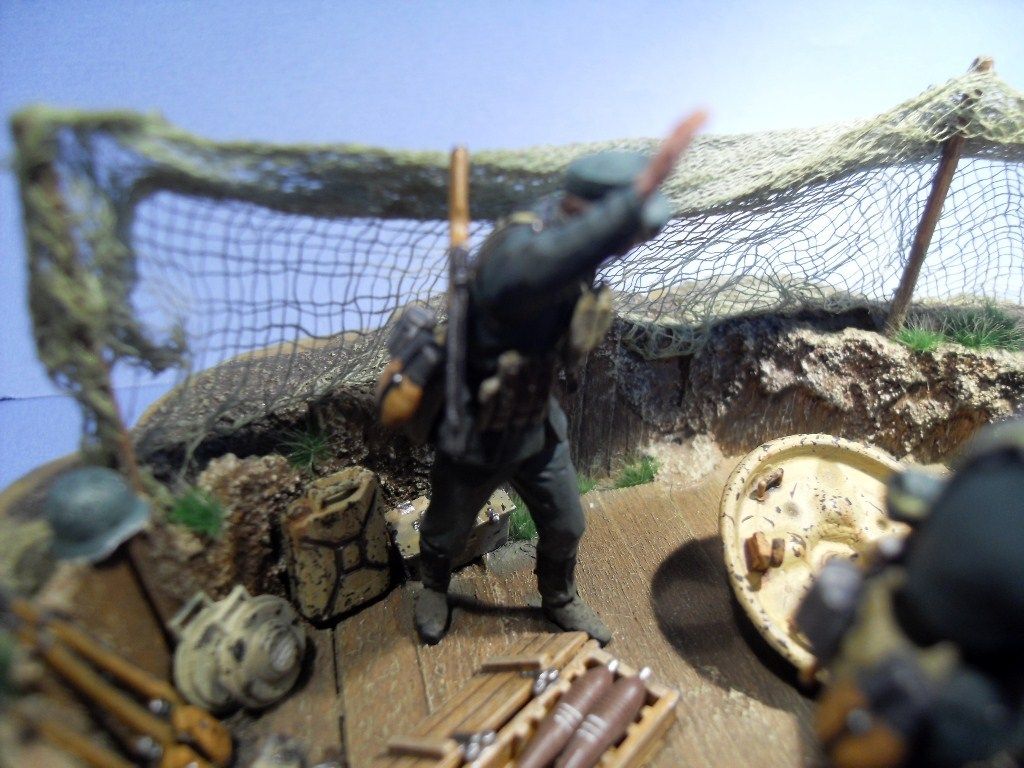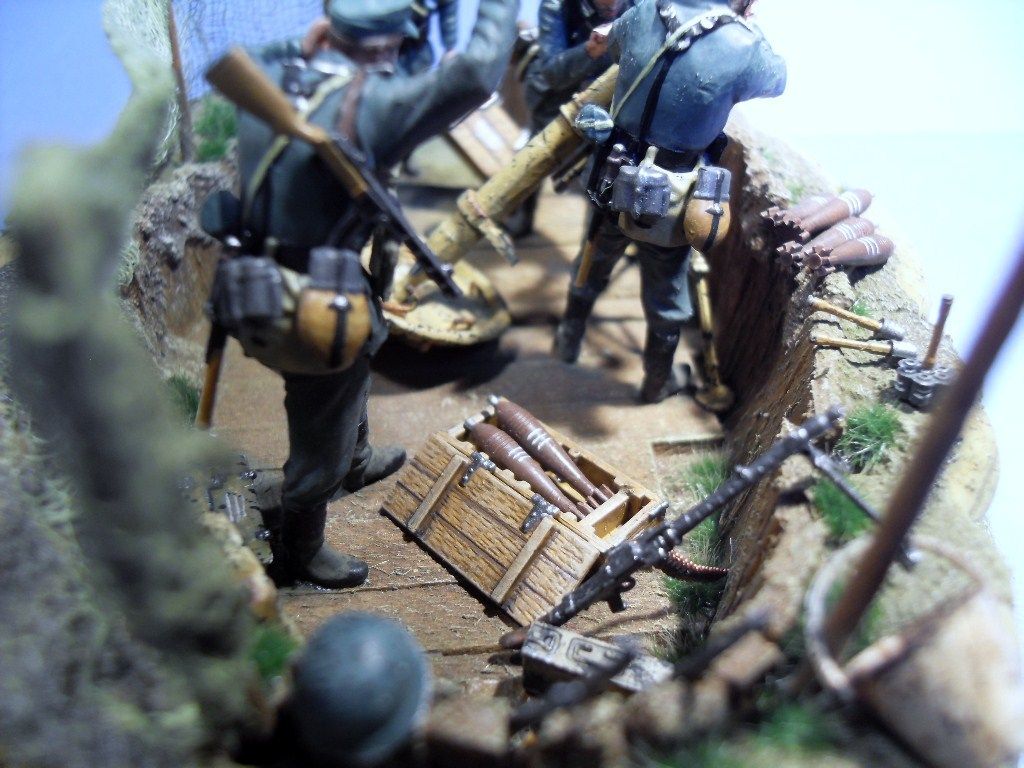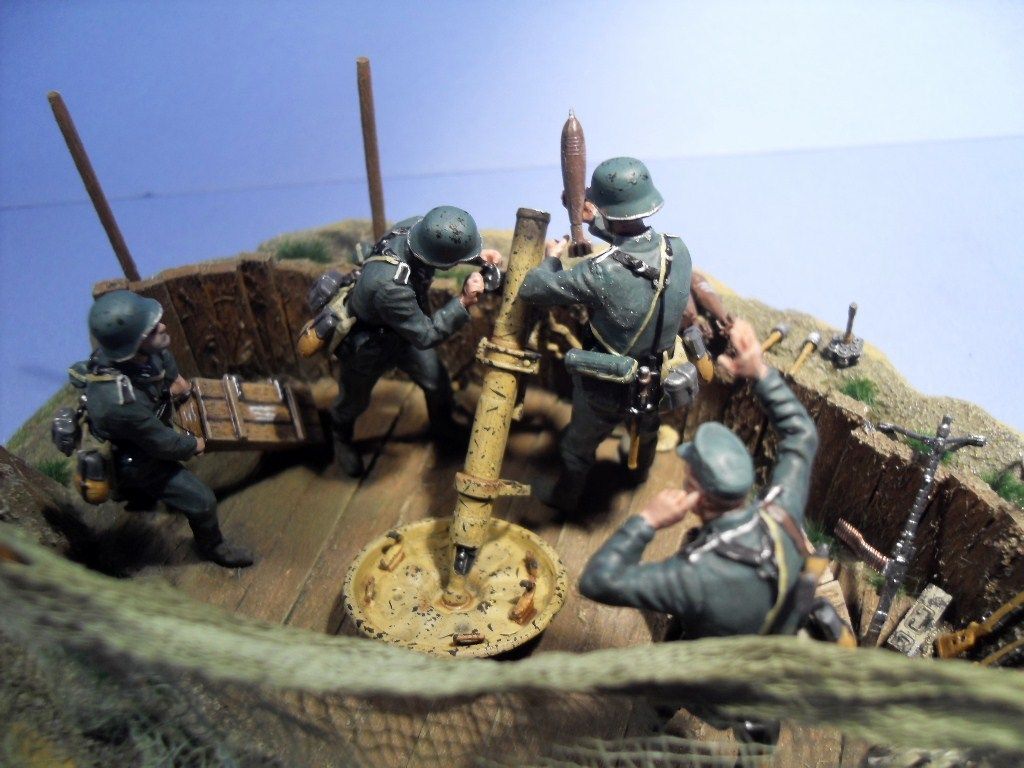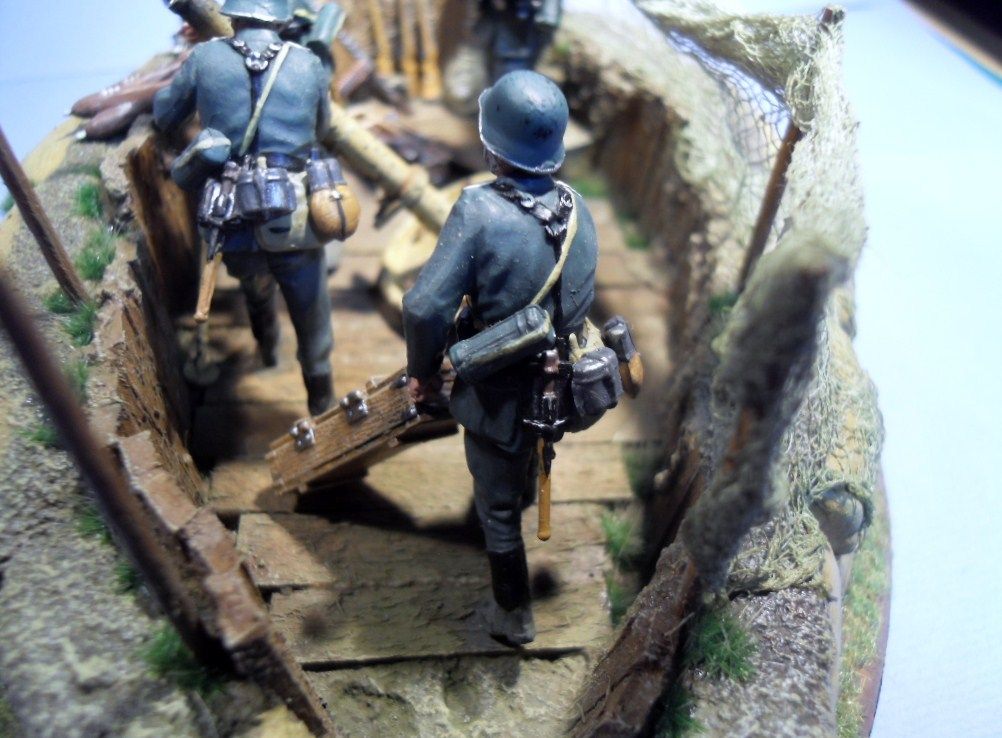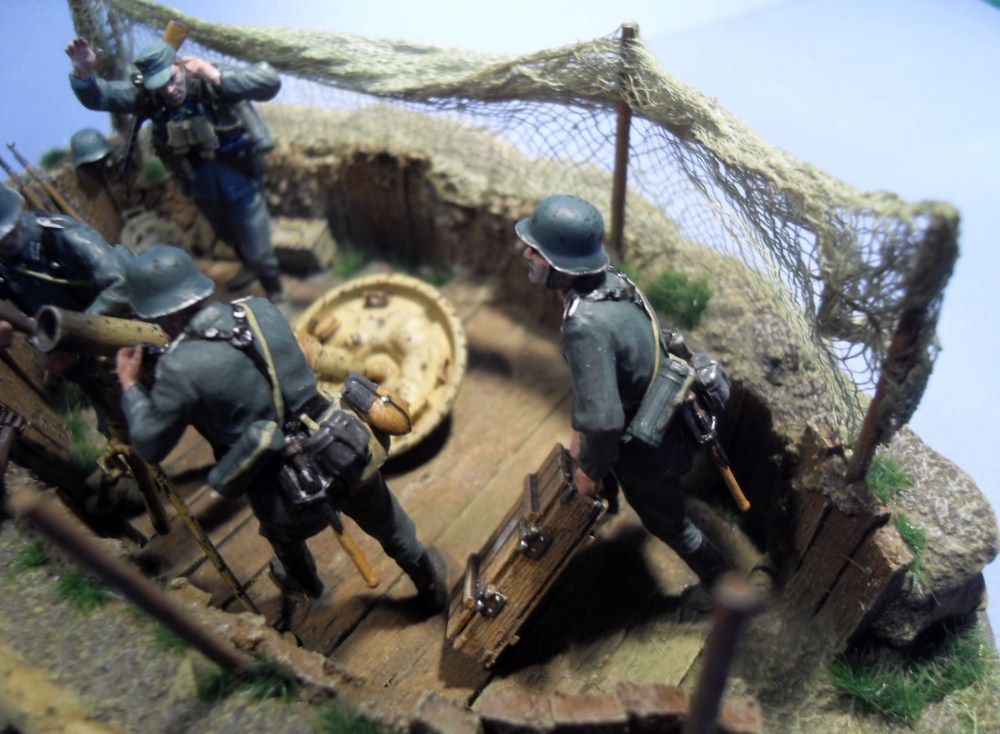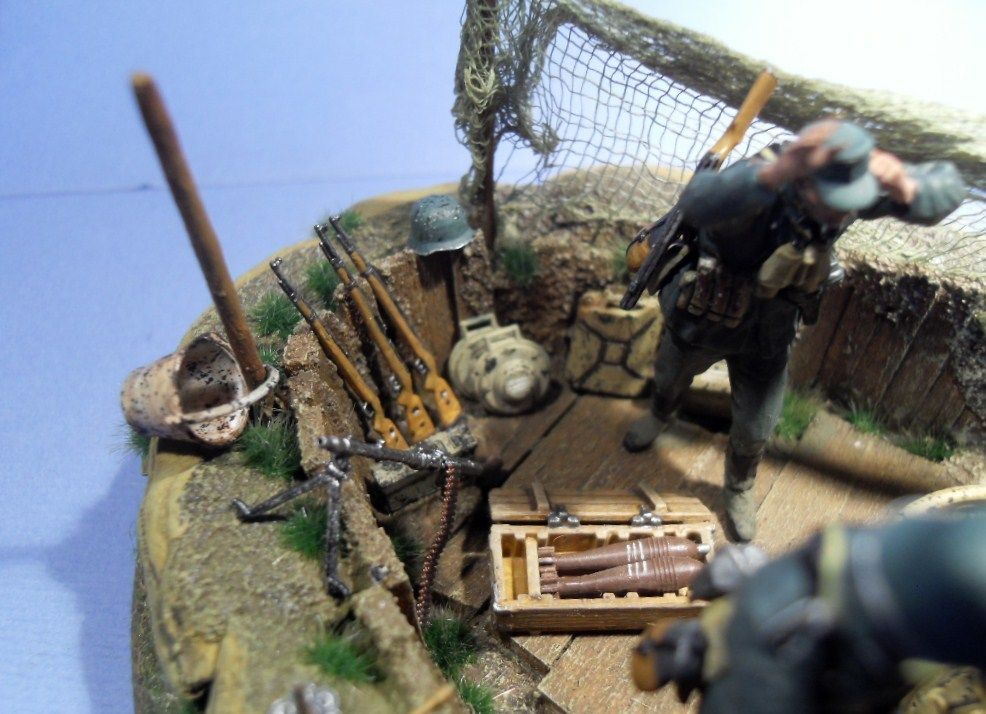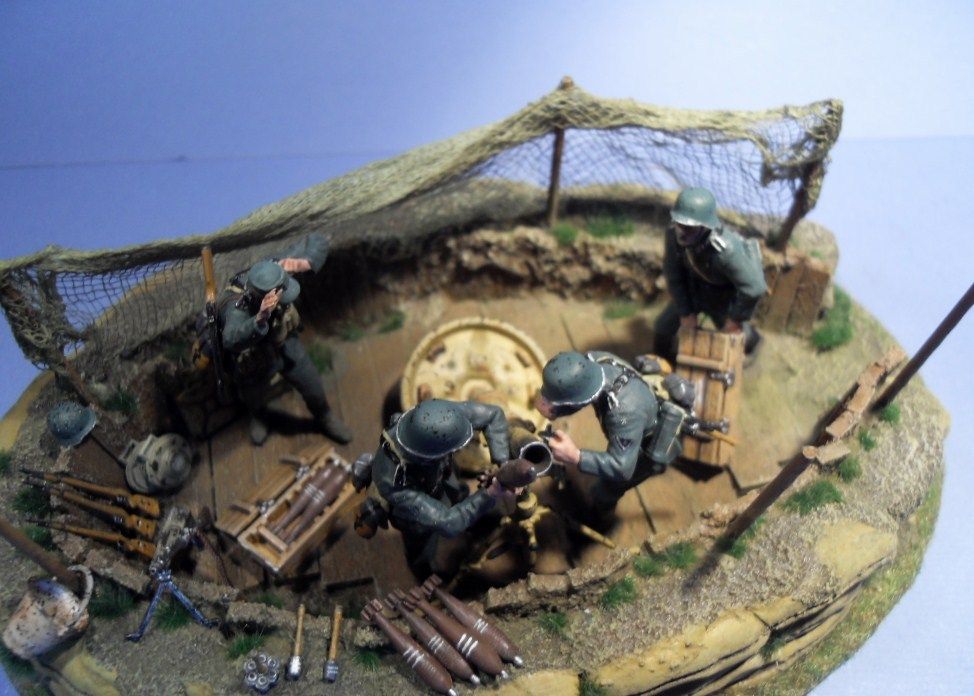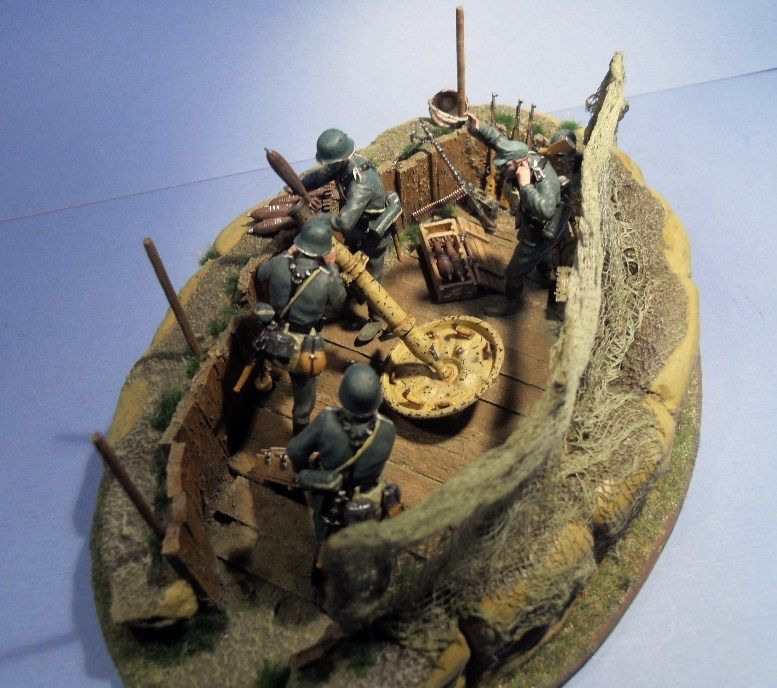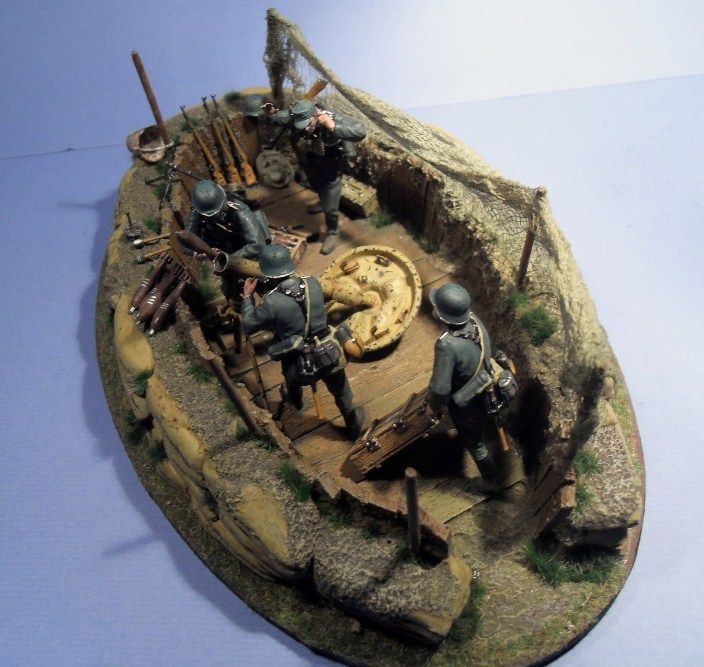Dear Gerry,
From an artillery guy!
At the bottom of the mortar base plate you can see ribs. These ribs avoid the movement of the base plate due to the force, created by the fired mortar grenade.
Furthermore, you have modeled the soldier who takes care about the adjustment of the mortar. He uses a sight which is, optically, connected to a fixed point ( in most cases a (red/white) pole ). The position of the mortar is known to its crew ( found on a grid map), with the help of calculations ( or tables ) the mortar is set in the right position, both by adjusting the angle to the ground and side ward direction. By taking of gun powder rings the charge for the calculated flight is defined. This leads to the calculated landing point of the grenade.After setting the fuse ( detonation some meters above ground level, at ground level or delayed (which is used by eg. fox holes etc ) the grenade is dropped into the barrel and off she goes!
To make it possible to repeat an effective and quick fire after just more than one grenade it is necessary to fix the mortar as good as possible. A wooden floor would allow the base plate to shift, even if packed with sand bags.
I hope you accept my, positive intended, lectures!
Nice model anyway!


